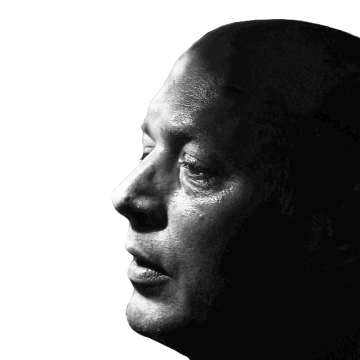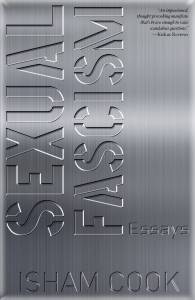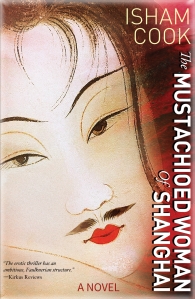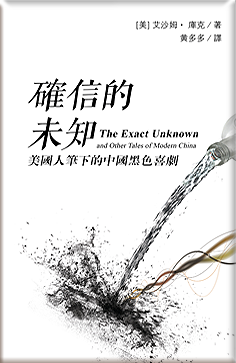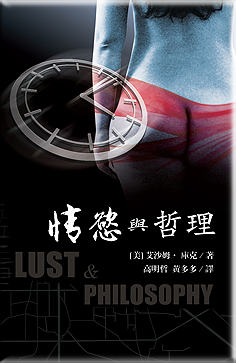 “Massage and the Writer’s salacious narrative, suffuse with dangerously honest erotic musings, is certain to garner Cook a cult following among libertine expats.”—City Weekend
“Massage and the Writer’s salacious narrative, suffuse with dangerously honest erotic musings, is certain to garner Cook a cult following among libertine expats.”—City Weekend
“[A] fascinating portrait of a man who has ventured into the titillating establishments the world has to offer.”—Kirkus Reviews
“Fascinating, enlightening and insightful.”—Bookish Asia
Amazon reviews:
“Anytime you take erotic experiences and turn them into learning tools of truth, you a writer to your last breath….For sure we all need to be touched regularly because touch calms the beast in us all.”
“This is not a book for the squeamish, but for those with a curious mind, who wish to know what goes on behind those curtains and red lights, this is the perfect introduction.”
“Isham Cook takes readers on a real-life (his) grand tour of the message parlors of East Asia, and it’s quite a journey that spans the legitimate, the fake and the sensually erotic.”
“A blend of the erotic, the pseudo-erotic, adventurous, and at times downright dangerous to the point of almost catastrophic positioning. A rip roaring, cringe worthy, thigh slapping, adventure into the darker side of life’s challenges.”
“A rigorous vocabulary and a sharp mind dissects the societal underpinnings of erotic massage, touch, and the often contradictory impulses of China (and other nations) that only the outsider’s perspective can observe.”
Goodreads review:
“I found myself bemused by his randiness. He describes himself as polyamorous and completely unabashed. We should all be so confident.”
Book description:
There is no more schizophrenic pastime than the application of oil to flesh. Whether as bodily relief and relaxation, a means of seduction, or a form of prostitution, massage has long both fascinated and repelled. But what if these contradictory aspects of the practice—the therapeutic and the erotic—were seen as inseparable and integral to it.
Spiced up by travels in the East in search of the ideal massage, bristling with trenchant, provocative essays, Massage and the Writer will appeal to littérateurs and aficionados of radical sexuality, while infuriating the “polite” massage business of New Age spas, aroma oils, and how-to coffee table books—all those with a stake in the strict separation of massage and sex.
TABLE OF CONTENTS:
Preface
Chapter 1 A Massage School
Chapter 2 The Old Chinese Bathhouse, Circa 2000
Chapter 3 Men Massaging Men: Three Countries
Chapter 4 Icon, Index, Symbol, Semen
Chapter 5 The Curious Benefits of Neurosis (from The Exact Unknown)
Chapter 6 The Taiwan Massage Scene
Chapter 7 Massaging the Yin-Yang in Pattaya
Chapter 8 Massaging the Masseuse in Beijing and Bangkok
Chapter 9 Japanese Voyeur Massage
Chapter 10 In Search of Malaysian Massage
Chapter 11 Coffee and Massage in Burma
Chapter 12 Why All Sex Should Be Paid For
Preface
Entering the men’s bath area at the Dream of Water bathhouse in the Chinese city of Wuhan, I am shocked by what I see at one end of the bathing pool. It is quite unprecedented—and this is after many years of living in China, where the unbelievable is a form of daily entertainment. No, it’s not the male patrons nearby growing hard-ons while their genitals and anuses are soaped up during the cleansing massage, de rigueur in bathhouses here (these are not gay establishments). Nor is it the sight of men openly washing themselves in the showers surrounding the pool, gazed on absentmindedly (or with curiosity in the case of foreigners) by the men soaking in the pool itself. After all, this is a country where people often leave their stall door open in public toilets to show you what newspaper they’re reading, as they while away the minutes expelling their constipated shit from lack of fiber in the diet.
I am referring to the spotlights lighting up the patrons like museum statues in the transparent shower stalls lining the end of the pool.
Let me try to help you visualize what I am describing. This row of shower stalls is distinct from the other showers surrounding the pool in that they face away from it, with the back of the stalls flush up against the pool edge. If you stand inside one, you are visible not only in front but also behind you through the glass-paned rear of the stall. In other words, the whole purpose is to illuminate your body for others’ amusement. Yet not only do the patrons in these stalls have no problem with the transfiguration of their bodies, they seem to relish in it.
I’d like to have a photo of this, but despite the insouciant exhibitionism on display, taking pictures without permission in a bathing area is in bad form, and of course for legal and ethical reasons any naked person apart from myself I managed to shoot would be inappropriate for publication. I could ask a fellow patron to snap me as I am showering, close enough that the adjacent stalls are out of the picture frame, or wait till they are empty to get a wider shot, but then I envision the cellphone falling into the water as he fumbles with it. Likewise no go is to have him sit on the opposite edge of the pool, given that the bathers would be caught in view.
Or I could announce to everyone present that I could pay them all to be in the picture, were it not for the fact I am presently on a budget.
A compromise is required. I get a reluctant attendant to come around to the front of the stall and shoot me there. The theatrical perspective from the pool is sacrificed, but at least it’s still visible behind me through the stall. With the focus on me in the foreground, the figures in the pool are sufficiently obscured as to be anonymous.
Whoever cooked up this concept of public showering as performance art, the implications are profound, above all now in the uninhibited Internet age. What a radical inversion of the most intimate of activities, one’s secret ablutions. By this masterstroke, it follows that all private activities are candidates for exhibition if the parties are willing: from the marriage chamber on the wedding night to the most tucked away of massage booths.
The massage booth differs from the shower in that two people are involved. It is an oil ablution, performed on one by another, not as on a queen in her private chamber, but merely to produce the necessary traction. Yet in this fairytale space all kinds of transformation are possible, if only for the smallest of audiences.
Massage is straightforward enough, but to describe the allure of massage is anything but. I attempt this in the following chapters by unveiling primal scenes in the massage stalls and chambers of various Asian countries. To prevent sensory overload from this baroque subject matter, I vary my approach in each chapter.
Chapter 1, “A Massage School” recounts the funny events that played out in a massage therapy course in the US during my grad school days, when they encountered the likes of me. Chapter 2, “The Old Chinese Bathhouse, circa 2000,” distills the essence of some 200 visits to Beijing bathhouses I undertook around the turn of this century in descriptive vignettes with comparative cultural analysis.
Chapter 3, “Men Massaging Men,” reveals my keen appreciation of gay eroticism. At the same time, the chapter is intended to confound the hackneyed expectations of straight men for a massage prostitution travel guide to Asia, which this book is not (you will find no list of massage establishments with addresses). Chapter 4, “Icon, Index, Symbol, Semen,” introduces the reader to the Chinese bathhouse by way of an introductory course in semiotics (I might have alternatively titled it, “Everything you wanted to know about semiotics but were afraid to find out in a bathhouse”). More on the infinitely varied Chinese massage experience is provided in Chapter 5, “The Curious Benefits of Neurosis,” as recounted by an obsessive-compulsive narrator out to visit every massage parlor in China.
Chapter 6, “The Taiwan Massage Scene,” takes us geographically and culturally a bit further afield from the Chinese mainland, and wields a few more semiotic tools to slice things up for digestible analysis. In Chapter 7, “Massaging the Yin-Yang in Pattaya,” I employ a Taoist symbol to tease out the contradiction between the sexual and nonsexual worlds of commercial massage, both juxtaposed in abundance in Thailand, the massage Mecca. More reportage on massage in China and Thailand in Chapter 8, “Massaging the Masseuse in Beijing and Bangkok,” but with an investigative angle that reverses the terms—when I offer some of the innumerable masseuses employed in the trade a massage instead.
Chapter 9, “Japanese Voyeur Massage,” imaginatively seeks to get into the head of the typical female customer who goes for massage (women go for paid erotic massage too), in the most perversely revealing of contexts, the Japanese reality porn niche known as “hidden cam massage.” Chapters 10 and 11, “In Search of Malaysian massage” and “Coffee and Massage in Burma,” look at how massage gets played out in these two countries in religion and politics, respectively. Chapter 12, “Why All Sex Should Be Paid For” (originally titled “A Modest Proposal Regarding Sex Work”) employs polemic and Swiftian satire to critique the intolerance of commercial sex in the age of Political Correctness.
You will also notice a kind of running commentary in the margins, a style of formatting common in Renaissance books and put to exuberant, beautifully overwrought and ultimately intimidating use in contemporary Robert Greene’s The Art of Seduction (Penguin, 2003). My marginalia are clearly subordinate to the main text. Some of these notes speak to or elaborate on specific points in the text; others are more free-floating observations: they are my thoughts while on the massage table. They may be perused at will. They also celebrate the virtues of the printed book and its unique advantages over the ebook, for which I’ve had to come up with a different solution by creating access to the marginalia through hypertext links.
In answer to the inevitable question of what I’m trying to get at by yoking together two seeming incompatibles—massage and writing—I wish to point out the intimate relationship between the two endeavors, the one being a writing on the body with oil for ink, the other a massaging of paper with pen. Consider by way of analogy another type of text, the daguerreotype, the earliest type of photographic process, invented in 1839, which captures an image on a silver plate coated with light-sensitive chemicals. The daguerreotype grows more beautiful over time due to damage and decay, the colors fading into a silver sheen and veiling the image behind a haunting patina of stains, scratches and blotches. It’s so delicate a mere swipe is enough to wipe it off its plate, and that which a moment ago was of a finer resolution than any digital camera is capable of now appears on the finger as grime, though the plate’s pristine surface can be reused to create a new daguerreotype.
Massage reverses this process, transferring oil from the fingers to create a fleeting yet memorable design upon the flesh. To some, the idea of having one’s body smeared and soiled by a stranger, perhaps with unwelcome sexual intent, is repellent or even frightening. To others it is intensely appealing and exciting. How to account for this strange contradiction between griminess and the silver sheen, obscenity and ecstasy, is the subject of this book.
New & related:
American massage
Massage diary: Laos, Thailand, Cambodia, Vietnam
Categories: Erotics
